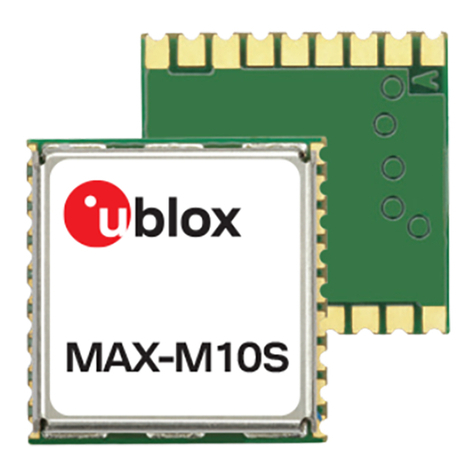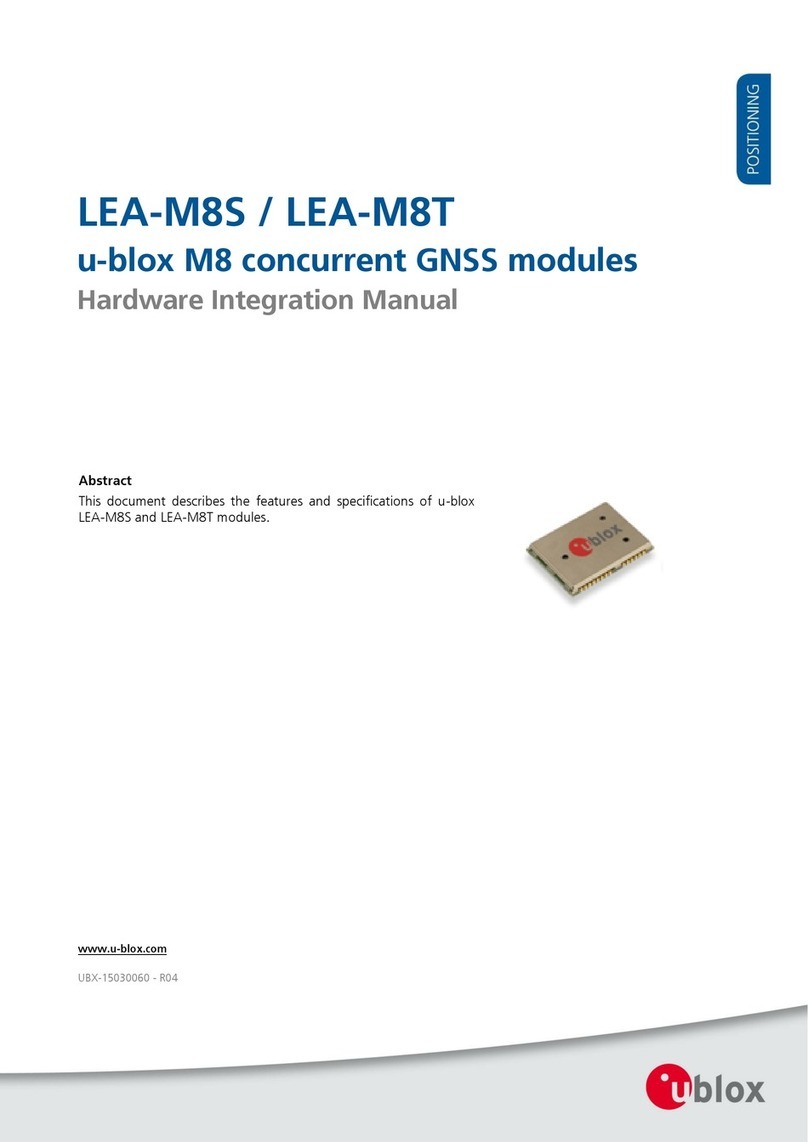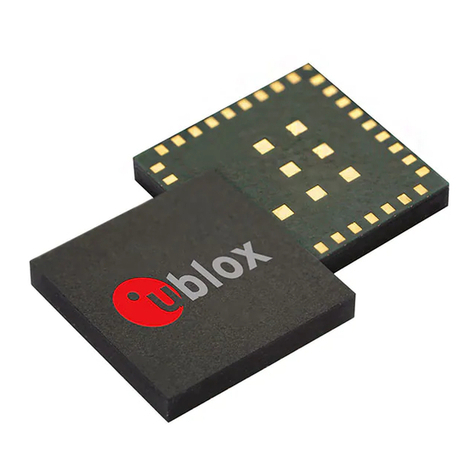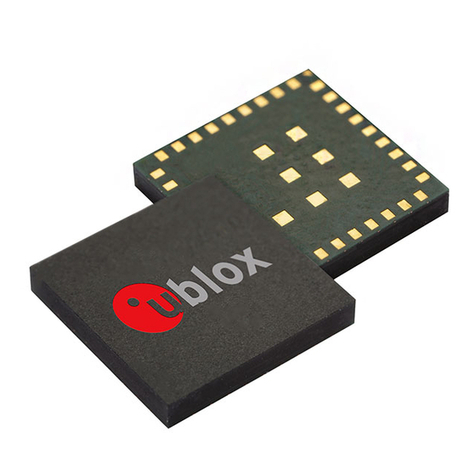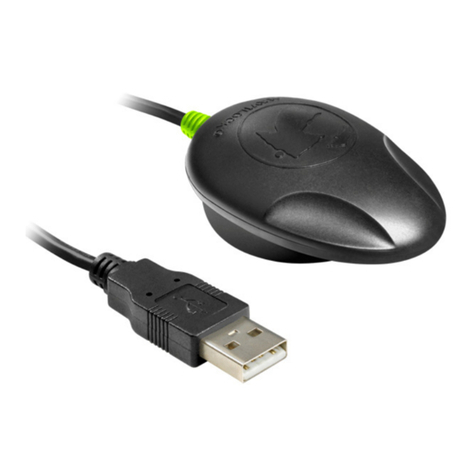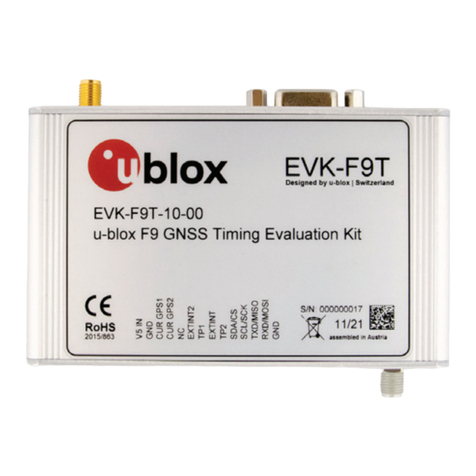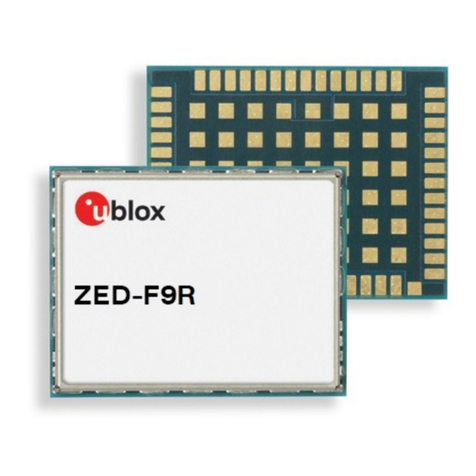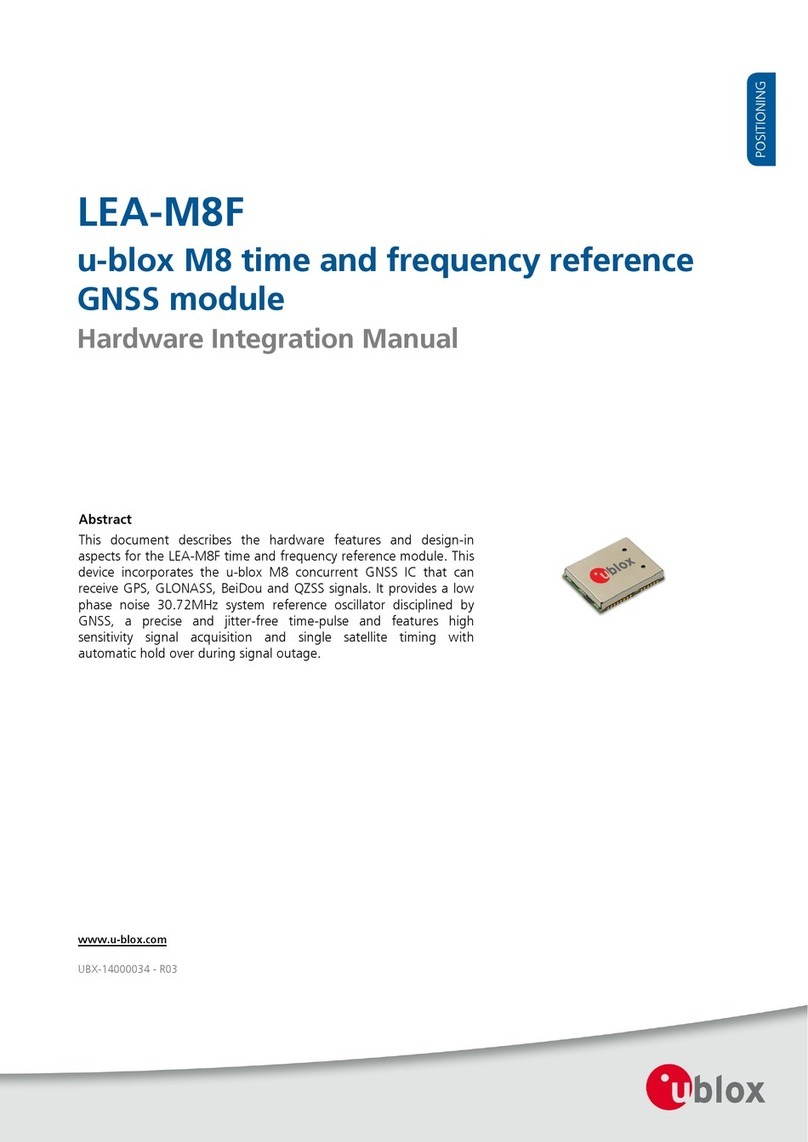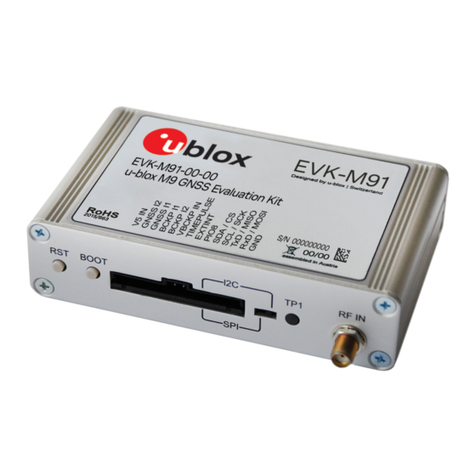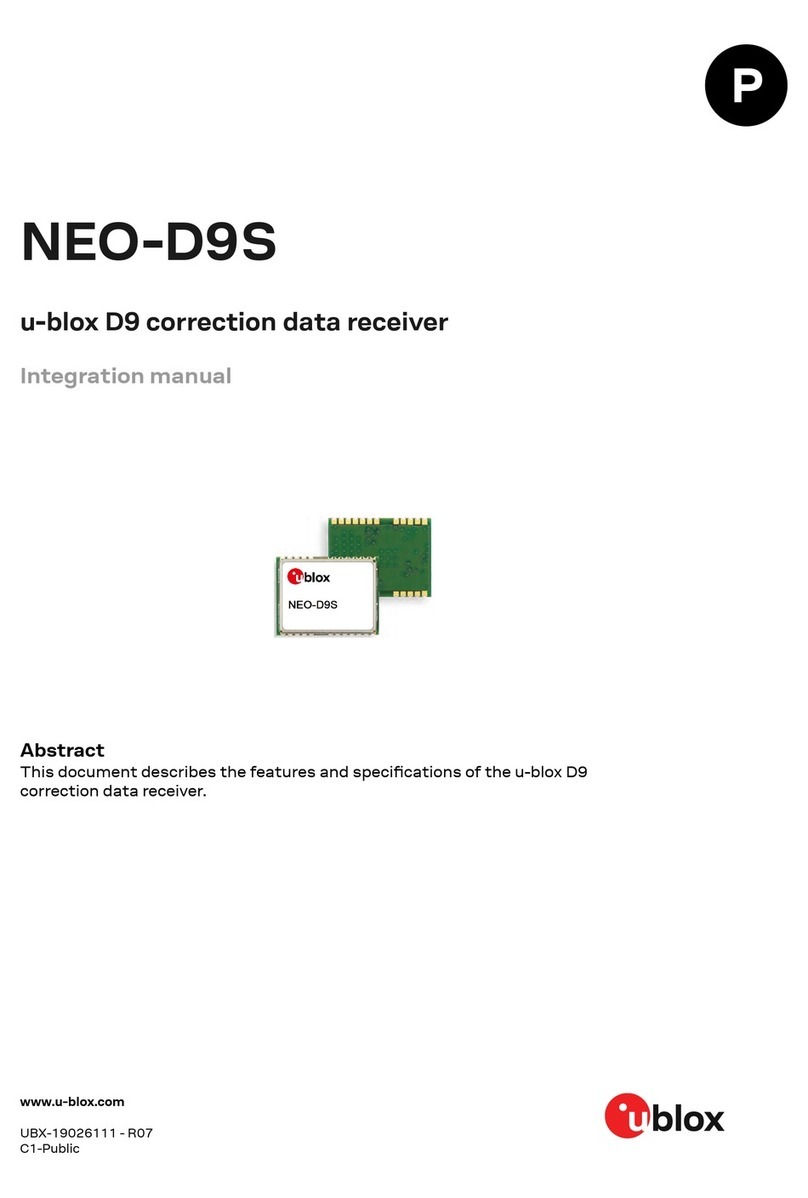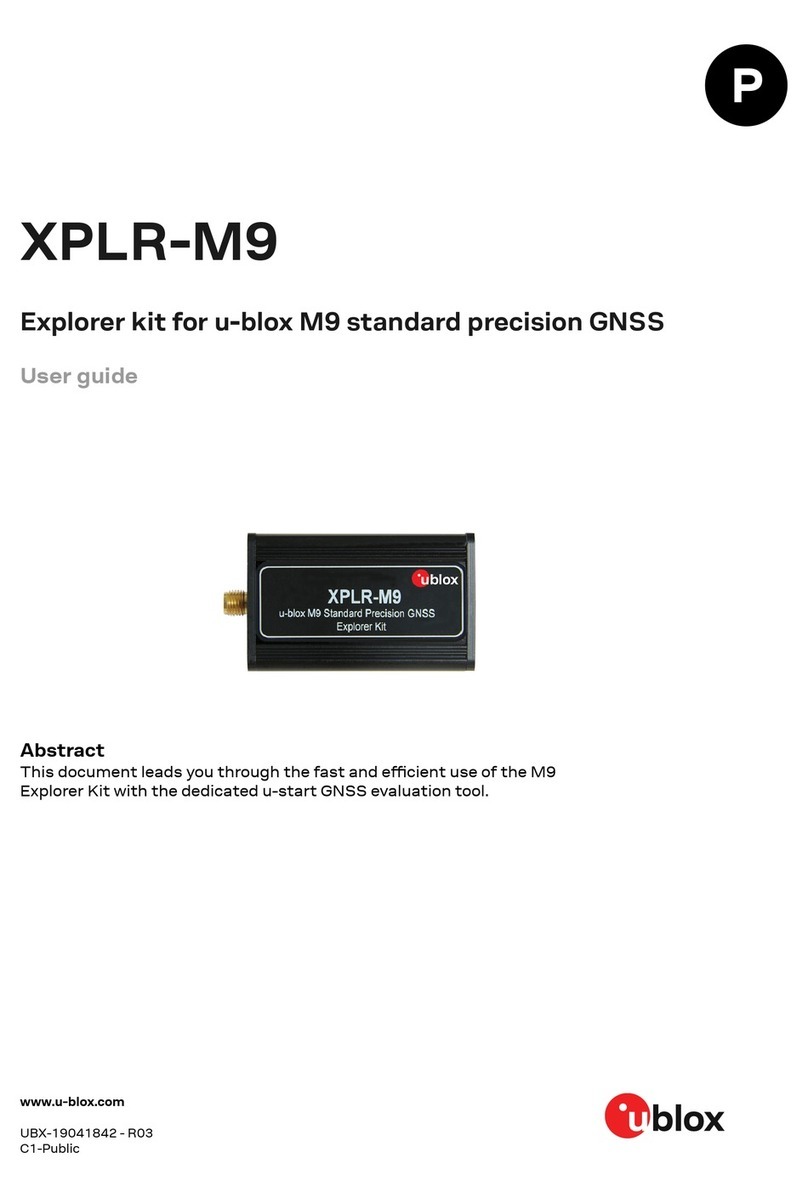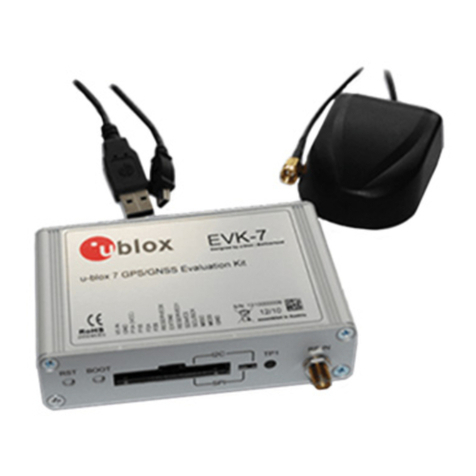
NEO-D9C-Integration manual
Contents
1 Integration manual overview............................................................................................. 5
2 System description...............................................................................................................6
2.1 Overview.................................................................................................................................................... 6
2.1.1 QZSS L6 augmentation service.................................................................................................. 6
2.2 Architecture..............................................................................................................................................8
2.2.1 Block diagram..................................................................................................................................8
3 Receiver functionality.......................................................................................................... 9
3.1 Receiver configuration........................................................................................................................... 9
3.1.1 Changing the receiver configuration..........................................................................................9
3.1.2 Default QZSS configuration.........................................................................................................9
3.1.3 Default interface settings............................................................................................................ 9
3.1.4 Basic receiver configuration...................................................................................................... 10
3.1.5 QZSS L6 satellite and message selection..............................................................................10
3.1.6 QZSS L6 data message output................................................................................................ 13
3.2 Communication interfaces................................................................................................................. 14
3.2.1 UART............................................................................................................................................... 15
3.2.2 I2C interface..................................................................................................................................16
3.2.3 SPI interface..................................................................................................................................19
3.2.4 USB interface................................................................................................................................20
3.3 Predefined PIOs.....................................................................................................................................21
3.3.1 D_SEL..............................................................................................................................................21
3.3.2 RESET_N........................................................................................................................................ 21
3.3.3 SAFEBOOT_N................................................................................................................................21
3.3.4 Extended TX timeout.................................................................................................................. 22
3.4 Security................................................................................................................................................... 22
3.4.1 Receiver status monitoring....................................................................................................... 22
3.5 Forcing a receiver reset....................................................................................................................... 22
3.6 Firmware upload....................................................................................................................................22
4 Design..................................................................................................................................... 24
4.1 Pin assignment......................................................................................................................................24
4.2 Antenna...................................................................................................................................................25
4.2.1 Antenna bias................................................................................................................................. 27
4.3 Power supply..........................................................................................................................................30
4.3.1 VCC: Main supply voltage.......................................................................................................... 30
4.3.2 NEO-D9C power supply.............................................................................................................. 30
4.4 NEO-D9C minimal design................................................................................................................... 30
4.5 EOS/ESD precautions.......................................................................................................................... 31
4.5.1 ESD protection measures.......................................................................................................... 31
4.5.2 EOS precautions...........................................................................................................................32
4.5.3 Safety precautions...................................................................................................................... 32
4.6 Electromagnetic interference on I/O lines.......................................................................................32
4.6.1 General notes on interference issues......................................................................................33
4.6.2 In-band interference mitigation................................................................................................33
4.6.3 Out-of-band interference........................................................................................................... 34
UBX-21031631 - R02
Contents Page 3 of 53
C1-Public
